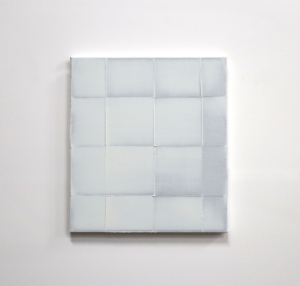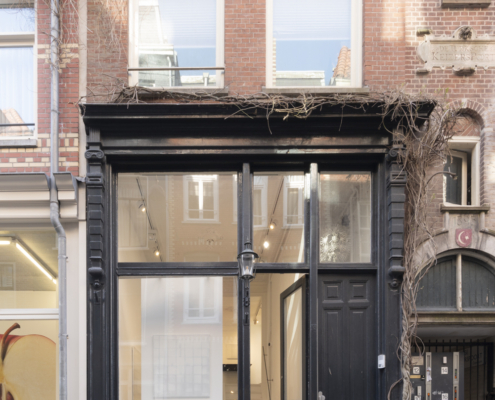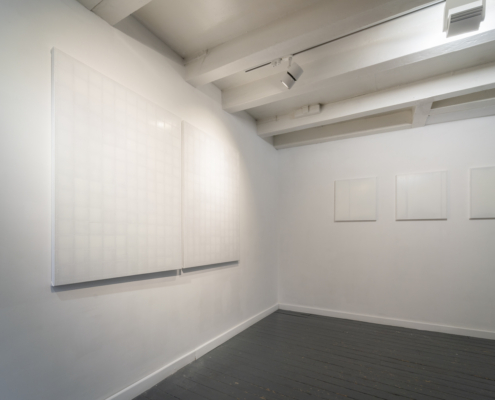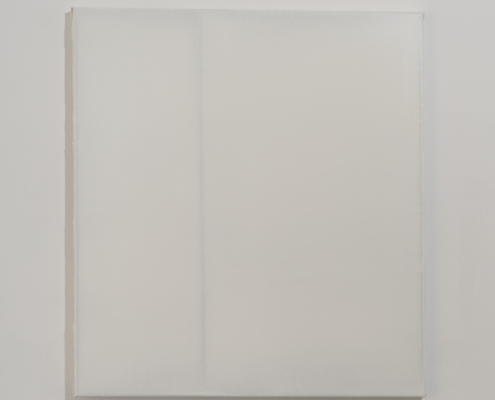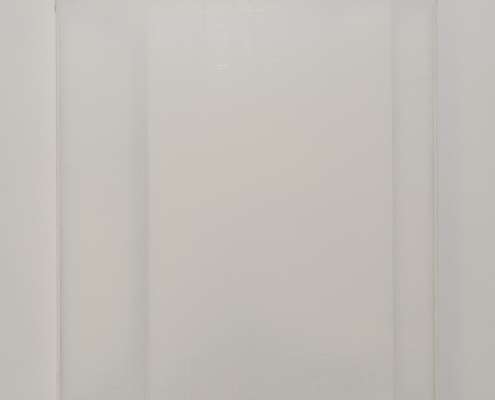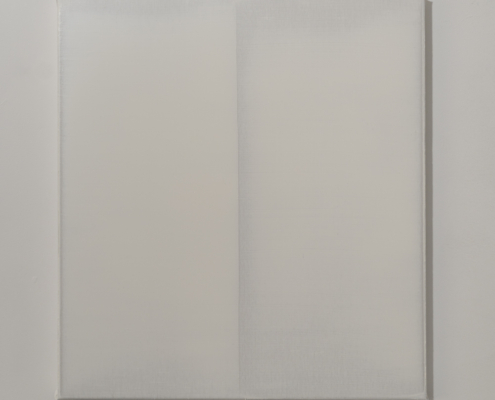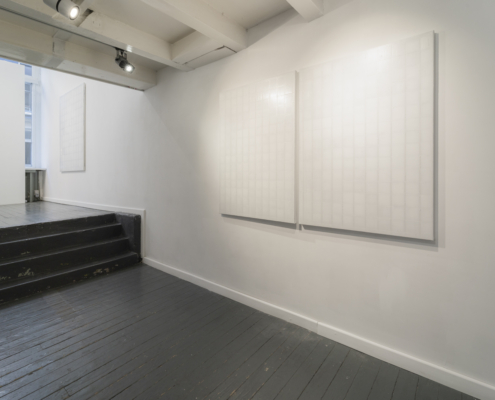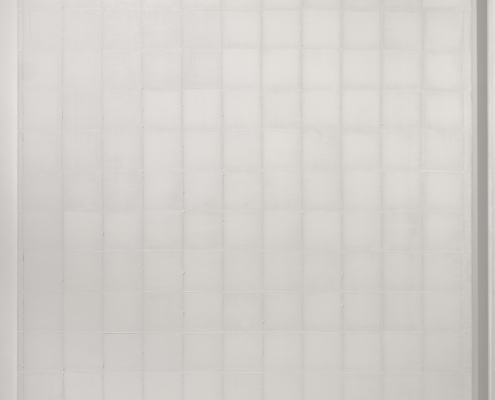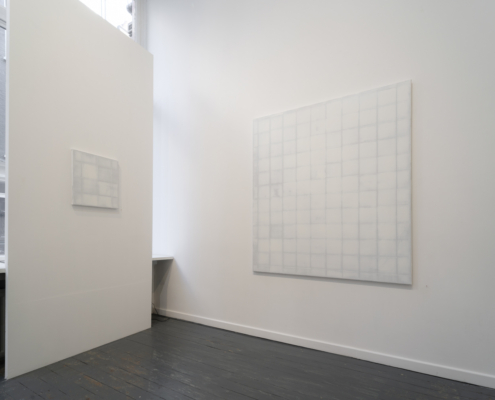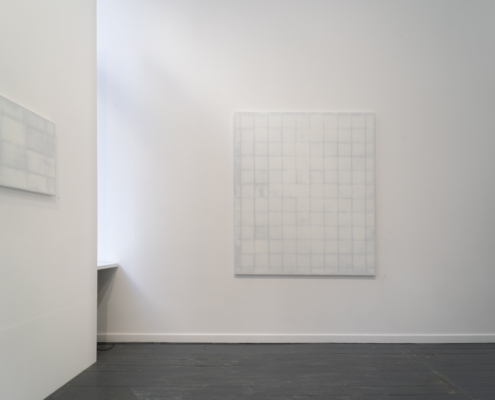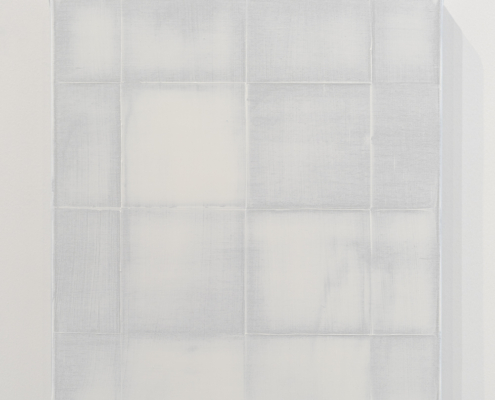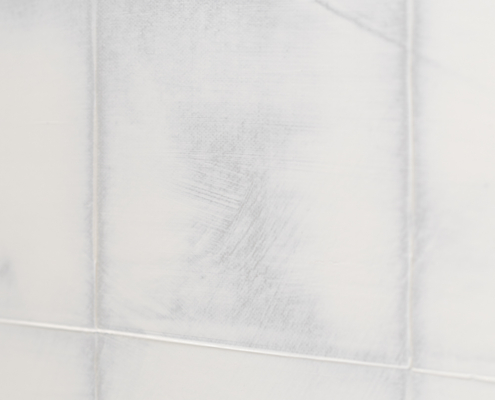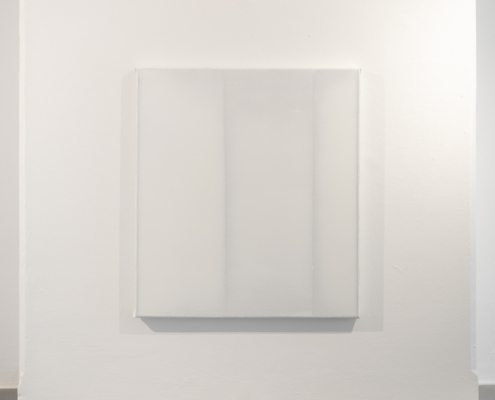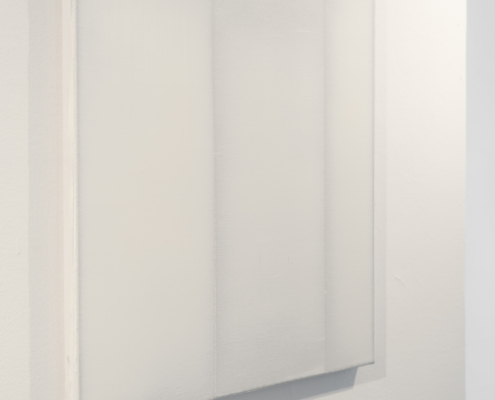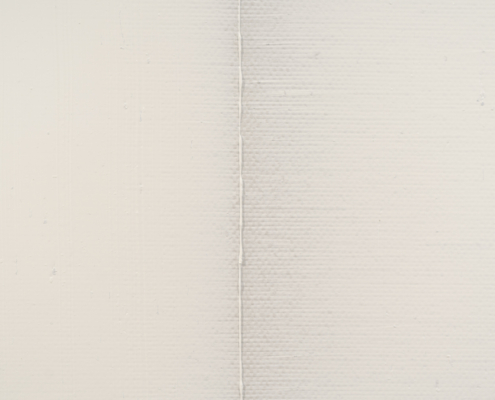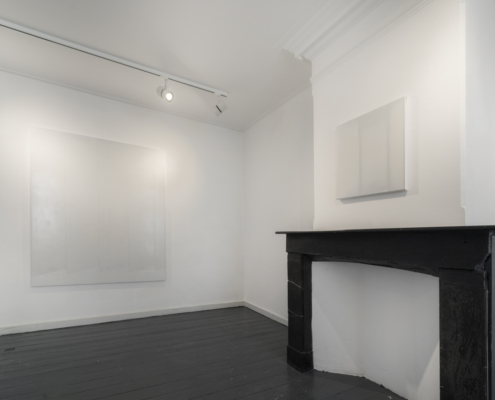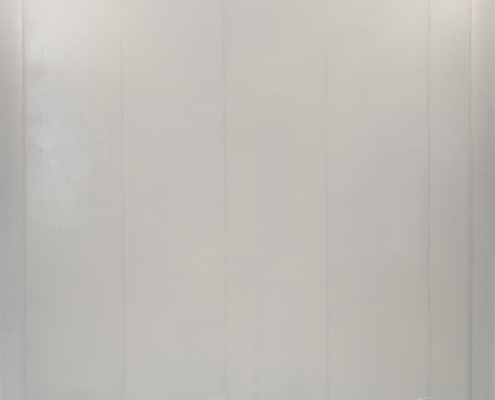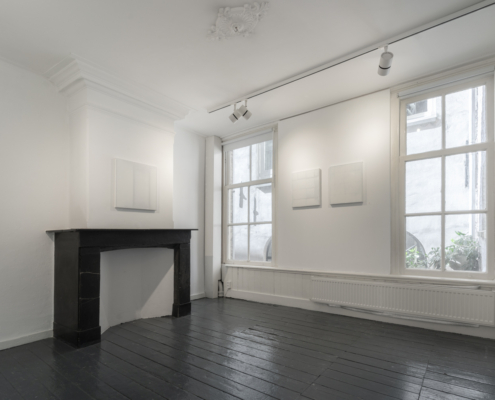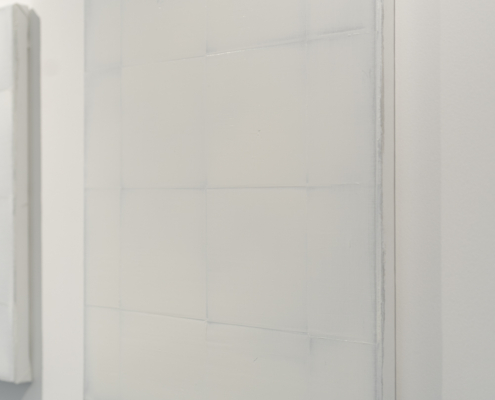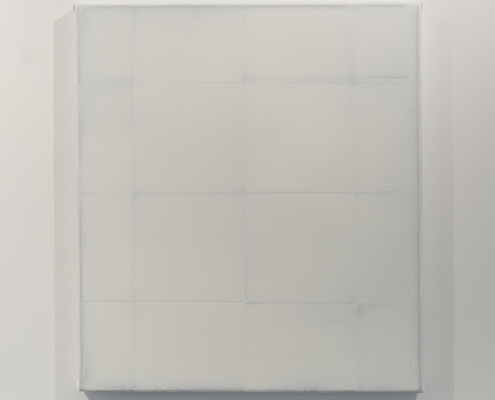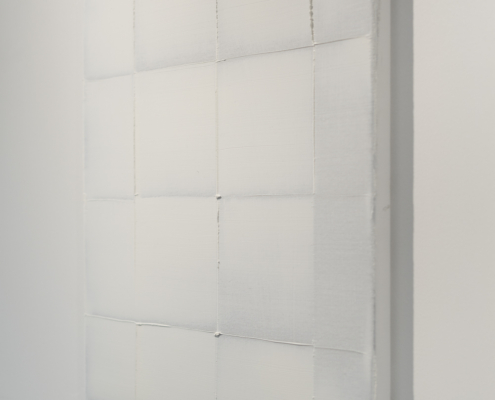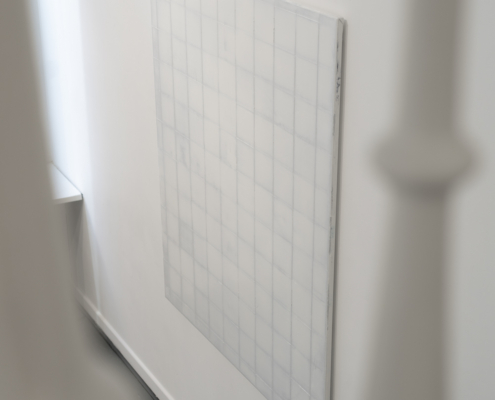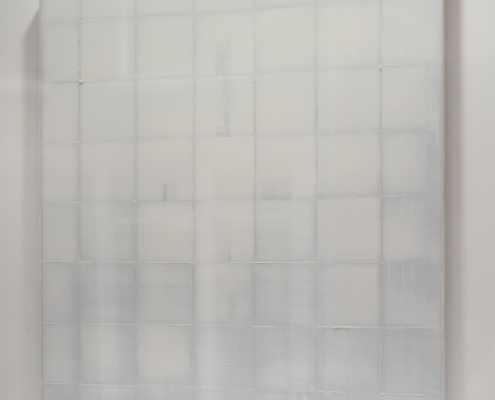Loes van Roozendaal
At her graduation show at the HKU in 2024, Loes van Roozendaal caught our eye with her white paintings, in which the light in the glass was central. She also painted slats, through which the trembling daylight seemed to shine. At first glance, the white paintings she shows in this exhibition now seem more formal. The paintings are fragmentations of objects or places that are influenced by the environment throughout the day. Her work is all about light and time: the continuous change of everything around us. The painting serves as a fragmentation of a moment, because it is different again in a moment. Everything is changeable and transient. However, through a painting she has the idea that she has control over what she does not want to perish. That she isolates a moment, a light or memory within the frame of the canvas.
The paintings suggest a figurative representation, but at the same time we are looking at an abstract image. The question she asks herself every day is: ‘How can you achieve the essence of an object or matter with as few strokes as possible?’. In a thickly applied layer of oil paint on the pre-treated canvas, she builds up the image with the palette knife. Due to the pressure difference when scraping away the paint with the palette knife, it gives texture to the white top layer. This creates subtle frayed edges, a play of covering or exposing the loosely painted underlayer. Through this extremely precise and professional way of working, Loes creates an image that challenges you to look at it for a longer period of time. Then it is noticeable that the color that breaks through the white seems to indicate a certain time of day: sometimes it is the morning sun, sometimes the light of the evening that shines through the white. Time appears to be hidden under the silent white.
In a world where we are overloaded with images in bright colors and constant movement, Loes’ tranquil, monochrome works make time stop; they force us to contemplate. Our visual ability, the process of looking, is addressed. By moving around for the work, we discover new structures, the image changes under the incidence of light. Then we also see that the diptychs are set up in such a way that the square pattern continues perfectly from one canvas to the other. Loes van Roozendaal leaves nothing to chance; She has completely adapted this complex working method to her will. She shows the telling silence between bright white and silky white.

